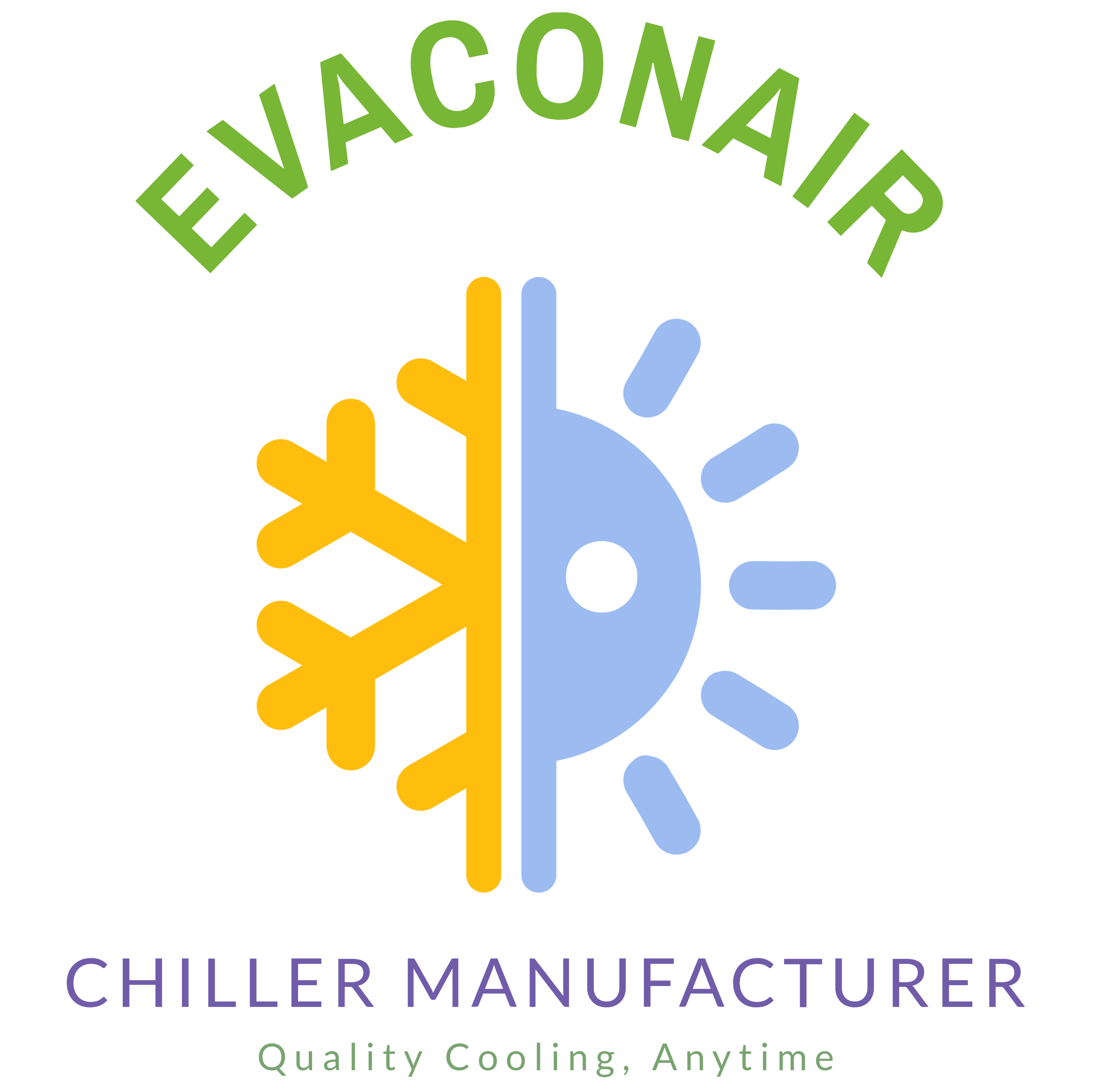Blog
What is the Principle of a Chiller?
The principle of a chiller revolves around the refrigeration cycle, which is used to remove heat from a liquid, usually water, and dissipate it into the surrounding environment. This process is essential for cooling in various industrial and commercial applications, where maintaining specific temperatures is crucial.
Key Principles of a Chiller
1. Heat Absorption (Evaporation)
- The chiller process begins in the evaporator, where the refrigerant absorbs heat from the liquid that needs to be cooled (e.g., water). As the refrigerant absorbs this heat, it evaporates and changes from a liquid to a gas. This cooled liquid is then circulated to cool processes, machinery, or air within the system.
- For example, in systems like an Air-Cooled Water Chiller or Water Cooled Water Chiller, this step is crucial for efficiently lowering the temperature of the circulating water.
2. Compression
- The gaseous refrigerant is then drawn into the compressor, where its pressure and temperature are increased. Compressors are critical in chiller systems, and their performance directly affects the system’s efficiency. Systems like the Air Cooled Screw Chiller and Water Cooled Screw Chiller rely on efficient compressors to maintain optimal operation.
3. Heat Rejection (Condensation)
- After compression, the high-pressure, high-temperature refrigerant gas flows into the condenser. In the condenser, the refrigerant releases the absorbed heat to the surrounding environment. In air-cooled systems, this heat is dissipated into the air, while in water-cooled systems, it is transferred to water, which is then cooled by a cooling tower.
- As the refrigerant releases heat, it condenses back into a liquid. This step is key to completing the refrigeration cycle and preparing the refrigerant for reuse.
4. Expansion
- The cooled, high-pressure liquid refrigerant then passes through an expansion valve, which reduces its pressure and temperature before it re-enters the evaporator. This reduction allows the refrigerant to absorb more heat in the next cycle, thus continuing the cooling process.
- Proper operation of the expansion valve is essential to ensure the system maintains the desired temperature and operates efficiently.
Applications of the Chiller Principle
- Industrial Cooling: The chiller principle is widely applied in industries where precise temperature control is required, such as in plastics, pharmaceuticals, and food processing. For example, a Mold Temperature Controller works alongside a chiller to ensure molds are kept at optimal temperatures during the manufacturing process.
- HVAC Systems: In large commercial buildings, hospitals, and data centers, the chiller principle is integral to the HVAC systems, providing the necessary cooling to maintain comfortable indoor environments.
- Process Cooling: Chillers are also used in managing temperatures in various industrial processes, ensuring equipment such as Gravimetric Blenders and Vacuum Hopper Loaders operate within optimal temperature ranges.
Conclusion
The principle of a chiller is based on the refrigeration cycle, which involves the processes of evaporation, compression, condensation, and expansion to remove heat from a liquid and dissipate it into the environment. This principle is crucial for cooling applications in industrial processes, HVAC systems, and other settings where temperature control is essential. Understanding how this principle works is key to selecting and maintaining the right chiller system, whether you’re dealing with an Air-Cooled Water Chiller in Ahmedabad or a Water Cooled Screw Chiller in Ahmedabad. For more detailed information on chiller systems and their applications, visit our products page.
